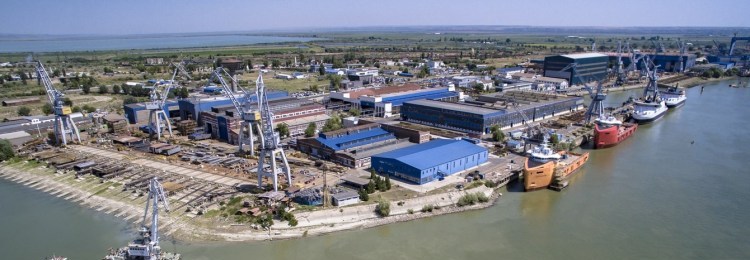Damen Shipyards Group operates 32 ship- and repair yards, employing 9,000 people worldwide. Damen has delivered more than 6000 vessels in more than 100 countries and delivers approx. 180 vessels annually to customers worldwide. Based on its unique, standardised ship-design concept Damen is able to guarantee consistent quality.
Damen’s focus on standardisation, modular construction and keeping vessels in stock leads to short delivery times, low ‘total cost of ownership’, high resale value and reliable performance. Furthermore, Damen vessels are based on thorough R&D and proven technology.
Damen offers a wide range of products, including: tugs, workboats, naval and patrol vessels, high speed craft, cargo vessels, dredgers, vessels for the offshore industry, ferries, pontoons and super yachts.
For nearly all vessel types Damen offers a broad range of Services, such as maintenance, spare parts delivery, training and transfer of (shipbuilding) know-how. To complete, Damen offers a variety of marine components, especially nozzles, rudders, anchors, anchor chains and steel works.
In addition to ship design and shipbuilding, Damen Shiprepair & Conversion offers a network of 16 repair & conversion yards worldwide, with dry docks ranging up to 420x80 metres. Conversion projects range from adapting vessels to today’s requirements and regulations to the complete conversion of large offshore structures. DS&C handles 1,500 repair and maintenance jobs annually.
Internship / Graduation Project Job Description
Internship / Graduation Project Prediction Model for the effect of a DTW on resistance
The Research Department provides specific technical support for the Product Groups (project/proposal and project/management departments), Engineering Services and affiliates in the fields of naval and mechanical engineering. Research undertakes specific studies for the development of ships by the Product Groups and to expand the knowledge base. This research can be divided into 5 categories, that is to say:
- Material Study, e.g. determining the operational life of a ship;
- Study on forces such as speed and tensile strength, as well as mechanical equipment on board;
- Health, Safety & Environment aspects, such as ergonomics, noise and vibration levels;
- Movement; such as manoeuvring and oscillation;
- Operational applications; which type/concept for which application. Special calculation methods were developed by Research for this purpose.
Research can calculate and verify the performance of a ship. A large part of the parameters used by the Product Groups and offered to customers in tenders originate from Research. With the design of ships, Research contributes to the functional design of the line plan with respect to the technical aspects by setting up pilot studies in cooperation with maritime institutes. Research designs/conducts research on certain parts of ships, often in collaboration with suppliers.
Research assignment:The resistance of high-speed monohulls and catamarans is easily affected by the trim setting. Because the cargo of a ship sometimes makes it impossible to select the ideal setting for the trim, a Deep Transom Wedge (DTW) has to be used. This is an extension of the stern under the ship (either adjustable or non-adjustable). This creates a stagnation or thrust point in the water displacement under high pressure. This pressure causes the stern of the ship to rise up and thus reduces the trim. At this point in time it is still difficult to predict the ideal stern extension because the precise forces and parameters that play a role are still unknown.
Project:The first step is to research the literature archive of Damen and to conduct a general search for literature on this subject. This should result in further substantiation of the theoretical model, where relevant with usable comparisons for the quantification of the impact of DTWs.
This then has to be compared with all the available measurement data in relation to DTWs. This will show whether or not the effects described in the literature are replicated in the practical examples.
CFD calculations (2D and 3D) will be made parallel to this. This will give an indication of what the causes might be for any discrepancies between theory and practice.
The final phase is the development of a method to measure the effect of a DTW. Ideally, this should be in the form of a calculation model or program that can be used straightaway. The design of this calculation model can also be based on the CFD model.
Internship / Graduation Project Job Requirements
- Bachelor's degree student in naval architecture/maritime engineering/marine engineering/hydrodynamics.
- Period: Negotiable.
Internship / Graduation Project Application Information
Please apply with your CV and cover letter by the 'apply' button below.
Please use "Qreer.com" as reference in your application.
Internship / Graduation Project Summary
| Education Backgrounds: |
Marine Engineering
Mechanical Engineering
|
| Specialties: |
CFD
Design Engineering
Naval architecture
|
| Education Level: |
Undergraduate (Bachelors)
Postgraduate (Masters)
|
| Experience: |
0 - 2 years
|
| Languages spoken: |
English
|
| Job Location: |
Gorinchem, Netherlands |
Apply

